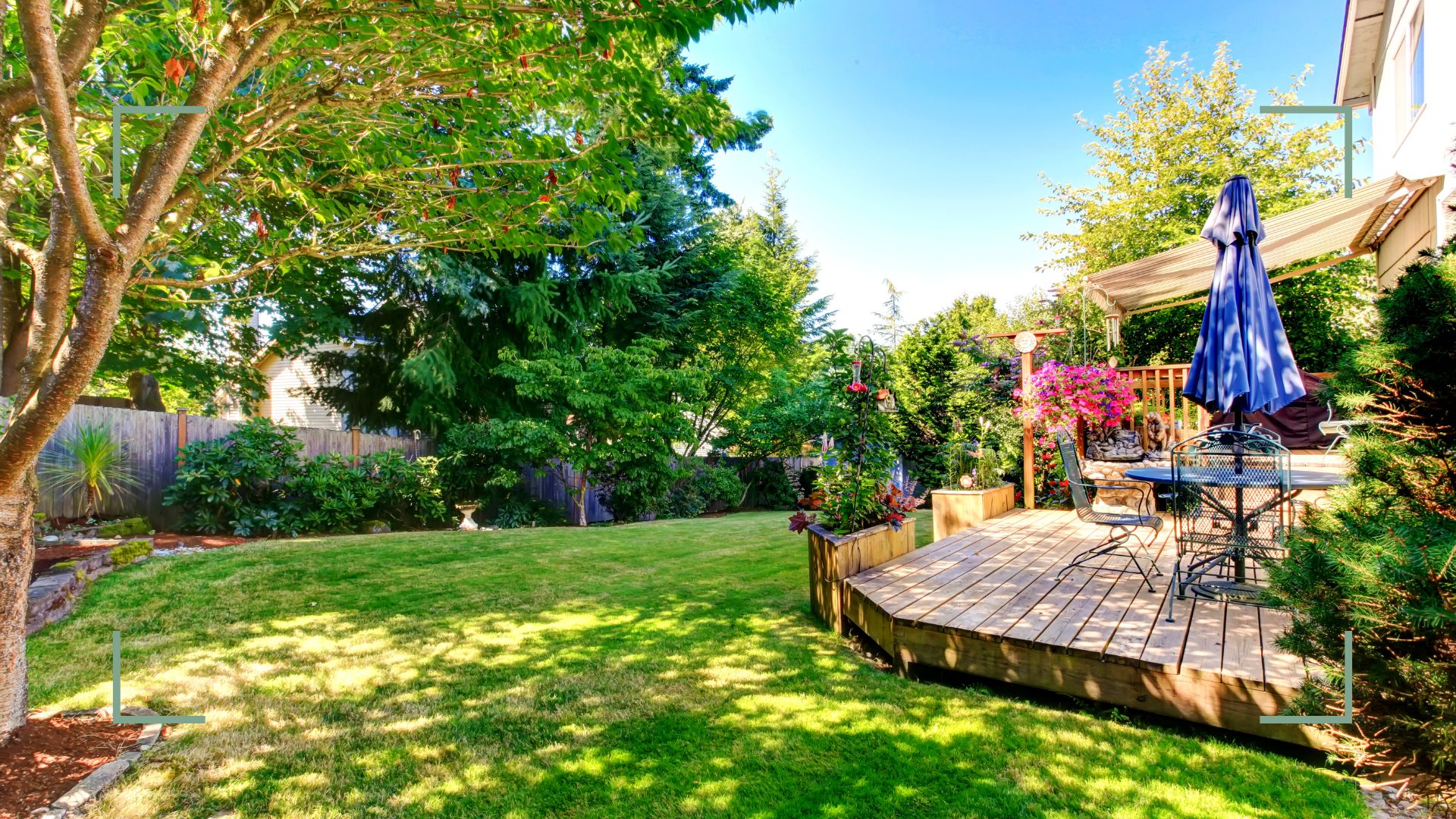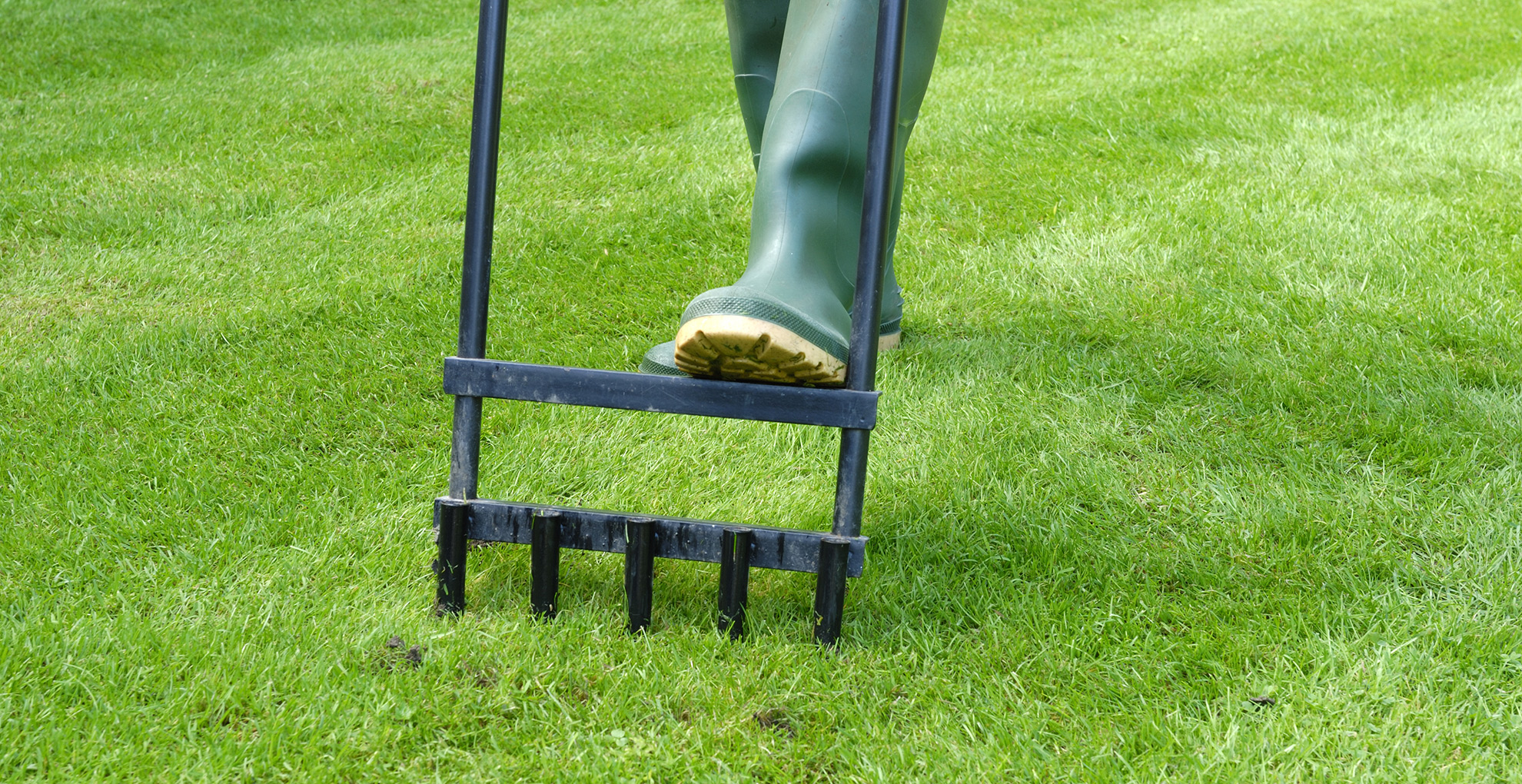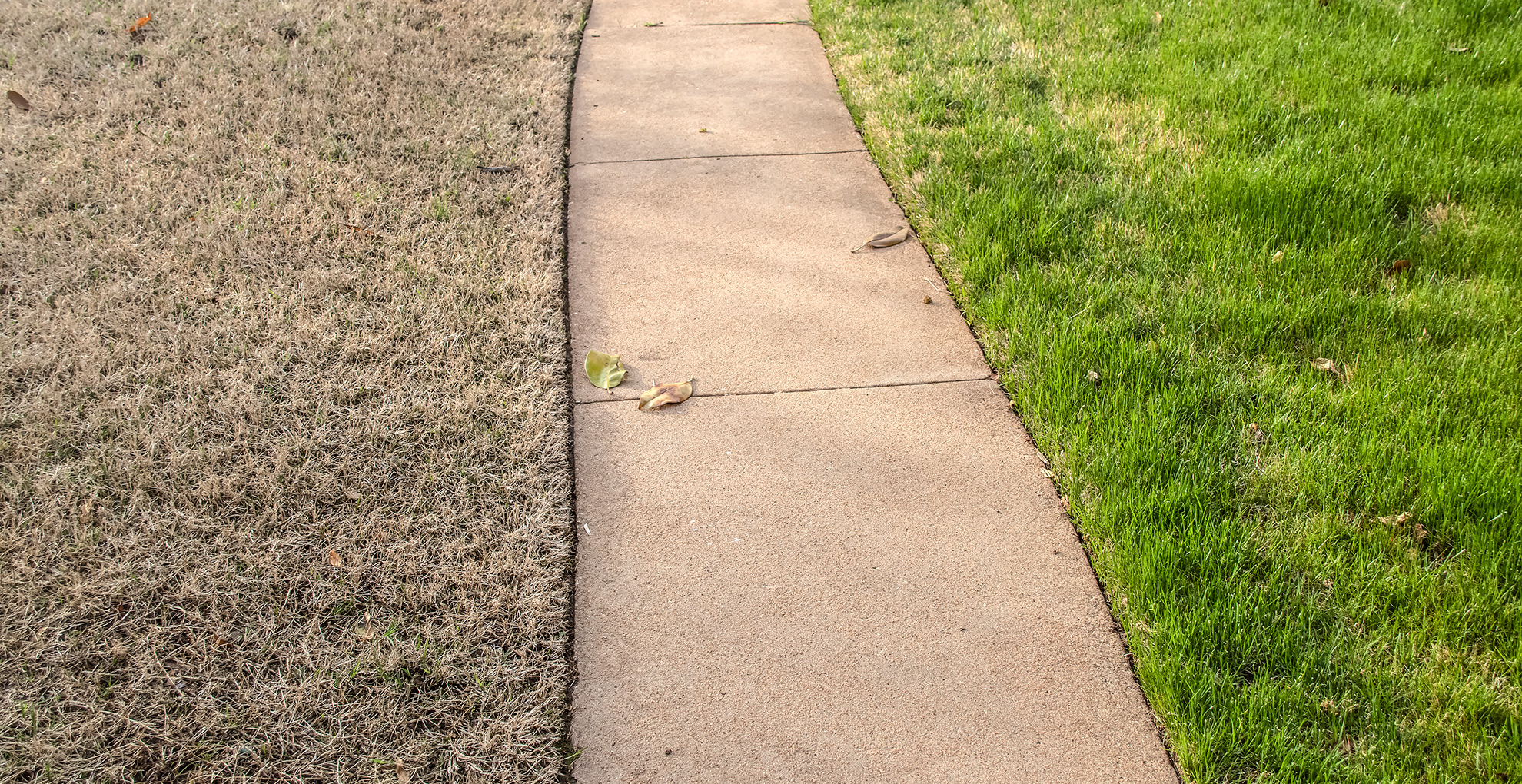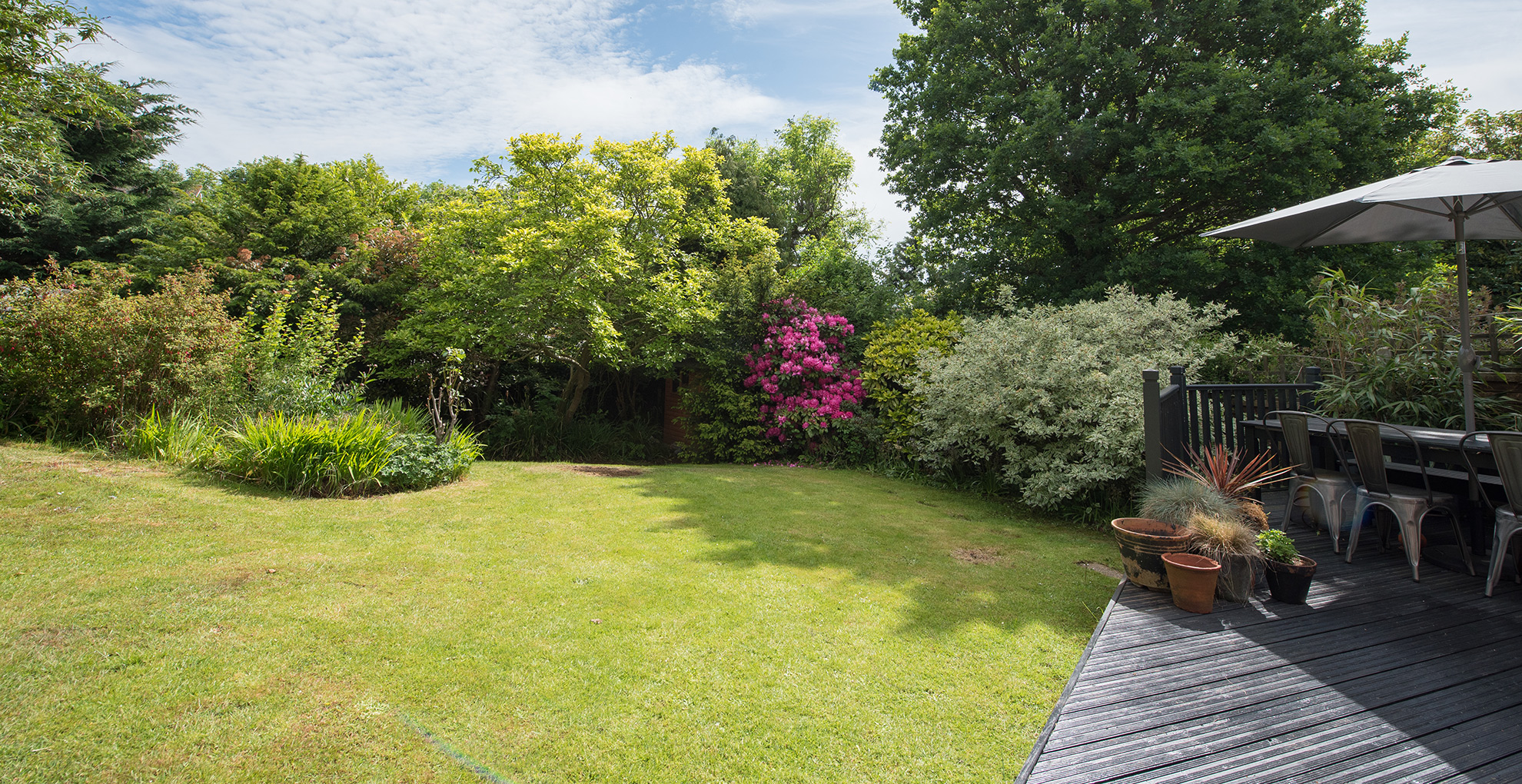
Tending to a lawn can sometimes feel like a challenge, knowing how little or often you should carry out essential maintenance – how often should you aerate your lawn being a prime example.
The cycle of grass-care jobs can be a hard one to navigate because it's all about balancing timings with climate conditions to achieve optimum results.
Take for instance how often you should mow your lawn, which will remain at the same frequency whereas calculating when to reseed grass will differ from season to season. However, how often you fertilize a lawn will, in principle, remain the same it'll just depend on the climate as to when you can do so.
So how often should you aerate a lawn? We ask lawn and grass experts to share their professional advice on how often to aerate a lawn for the best results, as well as what times of the year provide the best conditions to tackle the task.
How often should you aerate your lawn?
Asking yourself how often you should aerate your lawn is as good a question as any when it comes to navigating the best practices for keeping your lawn in tip-top condition. So how often is it recommended to aerate your lawn?
"The frequency at which you should aerate your lawn depends on several factors such as soil type, level of foot traffic, and compaction," explains Coleman Cosby, project manager at Yardzen, the online landscape design company. "As a general rule, it's recommended to aerate your lawn once a year, typically in the fall or spring when the grass is actively growing,"
Coleman goes on to advise: "However if your lawn receives heavy foot traffic or has clay soil that tends to become compacted, you may need to aerate more frequently."
"Aeration can be a tough job, so whilst it may seem like a good idea to aerate as often as possible, it can do more harm than good to you and your lawn," warns Chris McIlroy, a gardening expert at The Grass People.
"Try to confine spiking to compacted areas, and don’t do this too often. When using a garden fork, only do this once a year and if using a hollow-tine aerator, cut this down further to once every three years."
"Pricking can be done a little more regularly but remember this method won’t solve deep compaction issues. Generally, aeration is a good practice to carry out every once in a while to improve drainage and alleviate compaction, but it shouldn’t become a regular practice in any garden."

"Core aeration is a very traditional lawn care practice," explains Teri Valenzuela, natural science manager at lawncare specialists Sunday. "It intends to resolve compaction, address drainage issues and help increase air availability in soil."
"However, it can also disrupt and potentially damage soil." Hence the reason you shouldn't do it more than once a year, and only then if needed – a handy gardening tip for beginners to start off on the right foot.
"Core aeration doesn’t need to be a routine practice in an annual lawn routine (if it's not needed)," says Teri. "In fact, your goal should be to disturb your lawn’s soil as little as possible. It’s really only necessary for extremely compacted soils in high-traffic lawn areas or soils prone to compaction (like clay and silt)."
How do I know when my lawn needs to be aerated?
You'll know if your lawn needs aerating because there will be visible signs of soil compaction. From waterlogged lawns in rainy seasons to parched, dead grass in the height of summer.
"Simply put, aeration creates holes or slits in the soil to allow air and water to pass through freely," explains Chris. "This is mainly done to remedy soil compaction, which often causes waterlogging and can lead to moss and thatch appearing. It’s not just water damage that can be an issue either; in dry months, the opposite can occur, with soil struggling to absorb nutrients correctly. If left untreated, this can kill grass as roots become starved of water."
Explaining the problem with compacted lawns Teri says: "Compacted soil impacts the ability of oxygen, water, and nutrients to penetrate into grass’s root zone. This can reduce root growth, and result in grass that’s more susceptible to stress and damage."
Chris adds: "If you notice a substantial build-up of moss over winter, you should try and work regular aeration into your lawn maintenance routine."

When is the best time to aerate a lawn?
The best times to aerate are in summer and autumn when climates are generally better for carrying out the practice of piercing the soil.
"The purpose of aeration is to loosen up the soil beneath the ground to stimulate grass root growth and help the permeation of water and nutrients that help keep your grass green and healthy,' explains Jay Betts, a grass expert at lawn care specialist LawnStarter. "As for the best time of the year to aerate, if you live in a hot climate I recommend aerating during late spring or summer, and if you live in a cooler climate then early spring or fall."
"The best time to aerate cool-season lawns is mid to late spring, or in the fall," advises Teri. "For warm-season lawns, it's best to wait till late spring or early summer."
"Generally, pricking the soil is a good practice throughout the summer as it isn’t too severe but gives your lawn a little relief from surface-level compaction in the high-traffic months," advises Chris. "Spiking should be left until autumn when there is less traffic on the lawn."
"If you’re aerating in the fall, be sure to remove thatch and fall leaves by raking deep rather than just skimming the rake across the top of the lawn," advises Teri. This process is called scarifying and experts advise that you should avoid scarifying a wet lawn.
Is lawn aeration worth it?
Aeration is more than worth it for lawns that are compacted or struggling to see healthy grass growth. "Aeration involves removing small plugs of soil from the lawn to allow water, air, and nutrients to penetrate the soil more easily, which helps to promote healthy root growth," explains Jay.
"Aeration while not essential for most lawns is good practice to ensure a well-drained, healthy, and disease-free lawn," says Chris. "You should consider aerating your lawn if it experiences heavy traffic (kids and pets running around your garden all contribute to compaction). You should also consider aerating your lawn if it dries out easily in the summer and becomes very waterlogged in the wetter months - which is typical of clay soils."

How to aerate your lawn properly: Expert tips
"There are two ways to aerate your lawn, coring, and spiking,' explains Jay. "I recommend coring and avoiding spiking at all costs, the reason being that spiking can lead to your soil getting even more compacted around the holes being made from the spikes which is counterproductive to the benefits of aerating."
If you do need to aerate your lawn, we recommend taking the following steps to ensure maximum results:
- Determine what type of aeration you need. "It’s pretty much always going to be core aeration," says Teri. But determine the conditions of your grass before you start.
- Rent equipment or hire a professional to aerate your lawn. "To aerate your lawn, you can use a manual or motorized aerator that removes small plugs of soil from the lawn," advises Coleman. "Be sure to mark any irrigation or utility lines before aerating to avoid damage."
- Let soil plugs break down in the lawn, or rake away. "For compacted soils, raking up the soil plugs will be helpful to avoid the same soil from breaking down into your lawn," advises Teri.
- Avoid aeration during certain conditions. "it's important to ensure that the soil is moist before aerating, as dry soil can make it more difficult to remove plugs," says Coleman. While Teri adds: "Always skip aeration if your lawn was seeded or sodded within the last calendar year."







